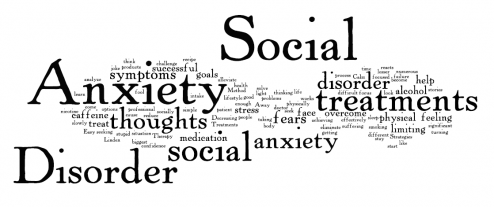How to Treat Anxiety Disorders: Worldwide Phenomena

How to Treat Anxiety Disorders?
What are anxiety disorders?
Anxiety disorder is a chronic condition and category of mental disorders characterized by fear and anxiety. Anxiety disorder may cause physical symptoms such as sweating, feeling of stress, and palpitations. Panic disorder, social anxiety disorder, a specific phobia, and agoraphobia are various anxiety disorders. They all include symptoms of anxiety, while each has its own characteristics and symptoms.
Anxiety disorders can be genetic but may also be due to drug use including caffeine and alcohol. They often occur with other mental disorders viz. eating disorder, depressive disorder, bipolar disorder, and personality disorder.

Treating Anxiety disorders
Anxiety disorders are treatable. There are vast majority of people with an anxiety disorders can be helped with professional care. Treatment can be complicated if people have more than one anxiety disorder. That’s why treatment must be tailored specifically for each individual; but several standard approaches have proved effective. Healthcare professionals can use one or combination of these treatments:
Medication
Therapy
Alternative and Complementary Treatment.

Behavioral Therapy for anxiety disorders
Cognitive Behavioral Therapy (CBT)
This is highly effective and lasting treatment for anxiety disorders. It focuses on understanding, identifying, and changing thinking and behavioral patterns. In this type of therapy a person is actively involved in his or her recovery. Patients can learn skills during therapy sessions, but they must practice repeatedly to see improvement. This therapy typically involves keeping records between appointments, reading about the problem, and completing assignments in which treatment procedures are practiced.
Dialectical Behavioral Therapy (DBT)
This therapy combines acceptance and change. It involves individual and group therapy to learn skills for interpersonal effectiveness, regulating emotions, and tolerating distress.
Acceptance and Commitment Therapy (ACT)
This therapy uses strategies of acceptance and mindfulness, along with behavior change, as a way to cope with unwanted feelings, thoughts, and sensations. This therapy imparts skills to accept these experiences, develop clarity about personal values.
Exposure Therapy
It is most effective therapy for phobias and obsessive- compulsive disorder. It is a process for reducing anxiety and fear responses. In therapy, a person exposed to a feared object or situation, learning to become less sensitive or fearful over time.
Interpersonal Therapy (IPT)
It is short term supportive psychotherapy that addresses interpersonal issues in depression in adolescents and adults. This therapy usually involves weekly sessions of 10 to 15 hours. The initial sessions are devoted to know the nature of person’s depression and interpersonal experience.
Medication for anxiety disorders
A variety of medications, including antidepressants and benzodiazepines, are used to treat anxiety disorders. But it is most effective when used in conjunction with behavioral therapies. Medication sometimes is used in the short term to relieve severe anxiety symptoms so that other form of therapy can be pursued. It may be a short term or long- term treatment option, depending upon the severity of symptoms.
There are four major classes of medications used to treat anxiety disorders.
Selective Serotonin Reuptake Inhibitors (SSRIs)
SSRIs relieve symptoms by blocking the reabsorption of serotonin by certain nerve cells in the brain. This leaves more serotonin available which improves mood. The Examples of SSRIs are sertraline, paroxetine, fluxetine etc. SSRIs generally produced fewer side effects as compared to antidepressants. However, common side effects are weight gain, sexual dysfunction, and insomnia.
Serotonin Norepinephrine Reuptake Inhibitors (SNRIs)
SNRIs are known for dual mechanism of action: increasing the levels of norepinephrine and neurotransmitters by inhibiting their reabsorption into cells in the brain. The Examples of SNRIs are venlafaxine and duloxetine. The common side effects are headache, stomach upset, and minor increase in blood pressure.


